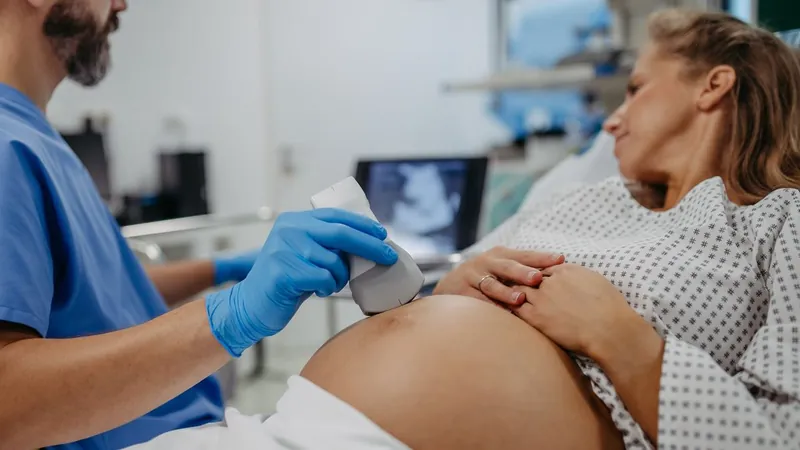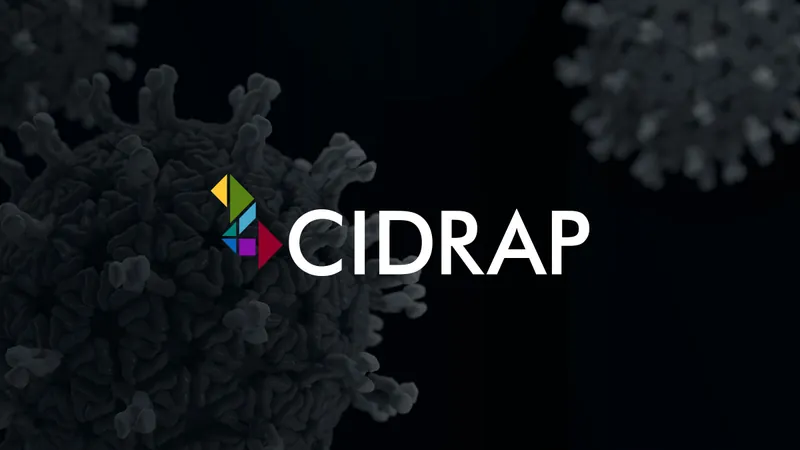
New Study Links IVF to Potential Health Risks in Babies — What You Need to Know!
2025-01-14
Author: Li
New Study Links IVF to Potential Health Risks in Babies — What You Need to Know!
A groundbreaking new study has revealed that assisted reproductive technologies (ART), especially in vitro fertilization (IVF), may impact the epigenetics of the placenta, potentially raising the risk of certain health issues for babies born through these methods.
To date, ART has facilitated over 10 million successful births globally, proving to be a valuable option for couples facing infertility. While these technologies are generally safe, they have been associated with slightly increased risks compared to natural births, including lower birth weight and certain cardiovascular and metabolic disorders in children conceived through ART.
Researchers have long speculated about the connection between ART and epigenetic changes—chemical modifications that influence gene activity without altering the DNA sequence itself. A recent first-of-its-kind study published in Communications Medicine delves into how these epigenetic signatures in the placenta may shed light on developmental impacts for children conceived via ART.
Led by senior author Nina Kaminen-Ahola from the University of Helsinki, the study examined DNA and epigenetic markers in placental tissues collected from a variety of ART conception methods. This extensive analysis revealed that some ART procedures may significantly modify gene activity, identifying specific genes that could clarify how ART influences the health of babies.
With the increasing use of ART around the world, the necessity of understanding its potential effects on pregnancy and child health is imperative. As public health researcher Siri Haberg highlighted, identifying the safest ART procedures is vital for enhancing care for couples seeking fertility treatment.
The Role of Epigenetics in IVF
Traditionally, studies on the health of ART-conceived children focused on umbilical cord blood for ease of sampling. However, Kaminen-Ahola and her team opted to explore placental tissues, offering crucial insights into early developmental stages. After a decade-long effort, they amassed 80 placentas from ART-conceived pregnancies and 77 from naturally conceived pregnancies, employing two ART techniques: IVF and intracytoplasmic sperm injection (ICSI).
Notably, the research indicated that fresh embryo transfers led to more significant alterations in gene expression compared to frozen embryo transfers. This discrepancy may arise from hormonal exposure during a critical period of embryonic development. Furthermore, placentas from ICSI conceptions exhibited gene changes linked to male fertility issues, reflecting the use of this technique in cases of male-factor infertility.
Critical genes identified in the study, such as TRIM28, NOTCH3, and DLK1, showed varying expression levels between groups, potentially correlating with differences in birth weight and size. TRIM28 is essential for embryo implantation and epigenetic regulation, while DLK1 is tied to infertility and placental development. The alterations in these genes provide a deeper understanding of the epigenetic changes and how they may explain various growth and metabolic differences in ART-conceived infants.
Implications of the Findings
Despite these findings, Kaminen-Ahola reassures that the variations in gene activity are typically subtle and aren't expected to have significant effects on the overall health of mothers or infants. While it's true that ART-conceived children may face a slightly elevated risk for conditions such as heart defects, preterm birth, and imprinting disorders, the associated risks remain marginal, and these procedures are deemed safe.
Moving forward, the researchers aim to expand their study by obtaining more placental samples to further clarify how the identified genes influence fertility and fetal growth. This research not only enhances our understanding of ART-related health outcomes but also lays the groundwork for future inquiries into associated pregnancy complications, such as preeclampsia and fetal growth issues.
In conclusion, while this study offers fresh insights into the effects of IVF on children's health, it is crucial to remain informed and proactive about fertility treatments and their implications. As research progresses, it could lead to improved ART procedures that prioritize not just the success of conception, but the health of both mothers and their babies. Stay tuned for more updates on this important area of research!




 Brasil (PT)
Brasil (PT)
 Canada (EN)
Canada (EN)
 Chile (ES)
Chile (ES)
 Česko (CS)
Česko (CS)
 대한민국 (KO)
대한민국 (KO)
 España (ES)
España (ES)
 France (FR)
France (FR)
 Hong Kong (EN)
Hong Kong (EN)
 Italia (IT)
Italia (IT)
 日本 (JA)
日本 (JA)
 Magyarország (HU)
Magyarország (HU)
 Norge (NO)
Norge (NO)
 Polska (PL)
Polska (PL)
 Schweiz (DE)
Schweiz (DE)
 Singapore (EN)
Singapore (EN)
 Sverige (SV)
Sverige (SV)
 Suomi (FI)
Suomi (FI)
 Türkiye (TR)
Türkiye (TR)
 الإمارات العربية المتحدة (AR)
الإمارات العربية المتحدة (AR)